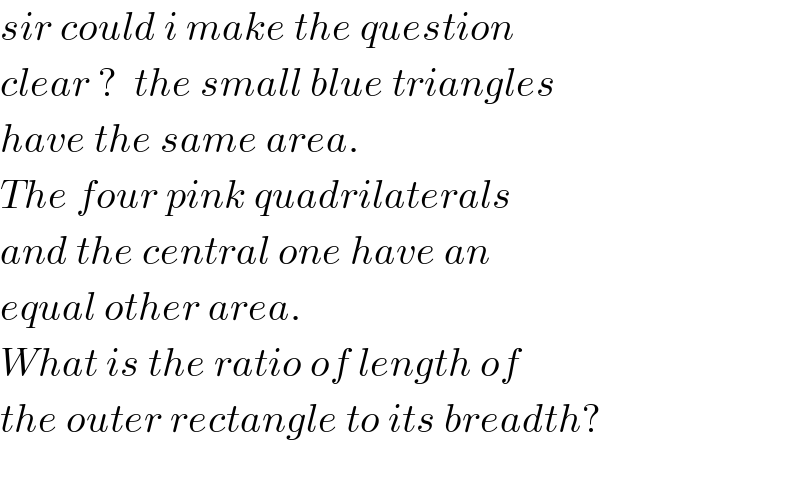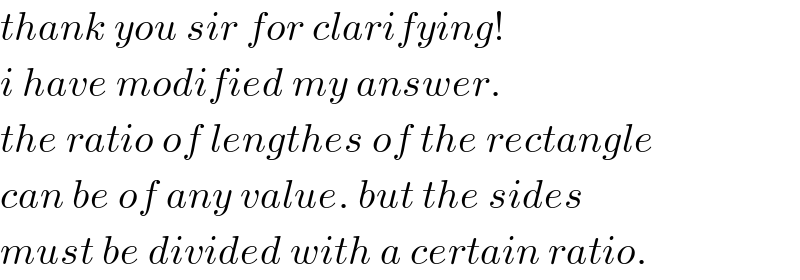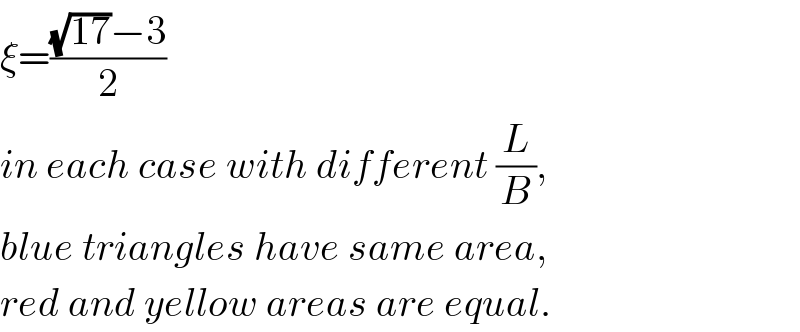
Question and Answers Forum
Question Number 74882 by ajfour last updated on 03/Dec/19

Commented by ajfour last updated on 03/Dec/19

Commented by mind is power last updated on 03/Dec/19

Commented by ajfour last updated on 03/Dec/19

Answered by mr W last updated on 03/Dec/19

Commented by mr W last updated on 03/Dec/19
![(f/e)=(c/(a+b)) af=c×(c/(c+d))×e ⇒(f/e)=(c^2 /(a(c+d))) (c/(a+b))=(c^2 /(a(c+d))) ⇒(a/(a+b))=(c/(c+d)) ⇒(a/b)=(c/d)=k (1/2)[(((a+b)^2 f)/a)−af]=(((a+b)d)/3) ⇒f=((2(a+b)ad)/(3(2a+b)b))=((2k(k+1)d)/(3(2k+1))) ⇒e=((2(k+1)^2 b)/(3(2k+1))) (f/(a−e))=((c+d)/a) ⇒(((2k)/(3(2k+1)))/(k−((2(k+1)^2 )/(3(2k+1)))))=(1/k) ⇒2k^2 −k−2=0 ⇒k=((1+(√(17)))/4)≈1.28 (k/(k+1))=((1+(√(17)))/(5+(√(17))))=(((√(17))−3)/2)≈0.56 i.e. the ratio of side lengthes of the outer rectangle can be of any value. the condition is only (a/b)=(c/d)=((1+(√(17)))/4) or (a/(a+b))=(c/(c+d))=(((√(17))−3)/2)](Q74897.png)
Commented by ajfour last updated on 03/Dec/19

Commented by mr W last updated on 04/Dec/19

Commented by mr W last updated on 04/Dec/19

Commented by mr W last updated on 04/Dec/19

Commented by mr W last updated on 04/Dec/19

Commented by mr W last updated on 04/Dec/19

Commented by mr W last updated on 04/Dec/19

Commented by ajfour last updated on 04/Dec/19

